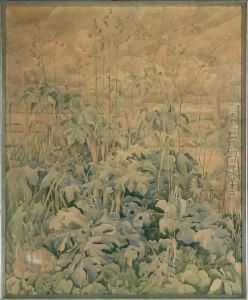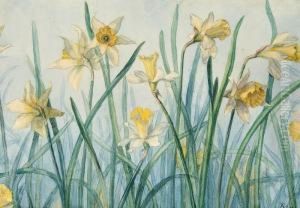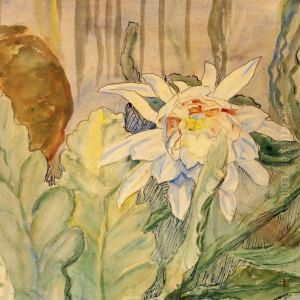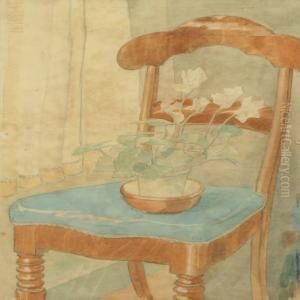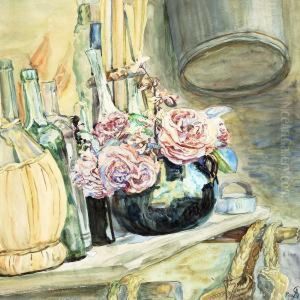Anna L., Nee Hansen Syberg Paintings
Anna Syberg, born Anna Louise Nee Hansen on March 21, 1870, in the town of Faaborg, Denmark, was a prominent Danish painter and watercolorist, particularly known for her floral compositions and landscapes. She was part of a group of artists known as the 'Funen Painters' ('Fynboerne'), named after the Danish island of Funen where they were based. This group is notable for their contributions to Danish art at the turn of the 20th century, with a focus on painting the natural surroundings and daily life of the area.
Anna was the daughter of a pharmacist and was raised in an environment that appreciated the arts. She trained as a painter at the Royal Danish Academy of Fine Arts in Copenhagen, where she honed her skills and developed her distinctive style. In 1894, she married fellow artist Fritz Syberg, who was also a key member of the Funen Painters. Together, they became a significant part of the artistic movement, often painting en plein air and capturing the unique light and atmosphere of the Funen countryside.
Throughout her career, Anna Syberg was known for her delicate and sensitive approach to painting. She often depicted flowers, still lifes, and landscapes using a soft and harmonious color palette. Her works are characterized by a lyrical and sometimes melancholic quality, reflecting her personal connection to the subjects she chose. Syberg’s paintings were exhibited widely during her lifetime, including at the prestigious Charlottenborg Spring Exhibition in Copenhagen.
Tragically, Anna Syberg's life and career were cut short when she died on May 4, 1914, at the age of 44. Despite her relatively brief career, she left a lasting impact on Danish art, and her works are still celebrated today for their beauty and emotional depth. Her legacy is preserved in several Danish museums, including the Faaborg Museum, which houses a collection of works by the Funen Painters, including Anna and her husband Fritz Syberg.
